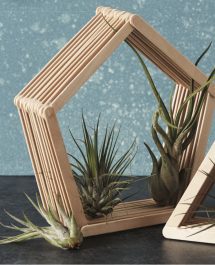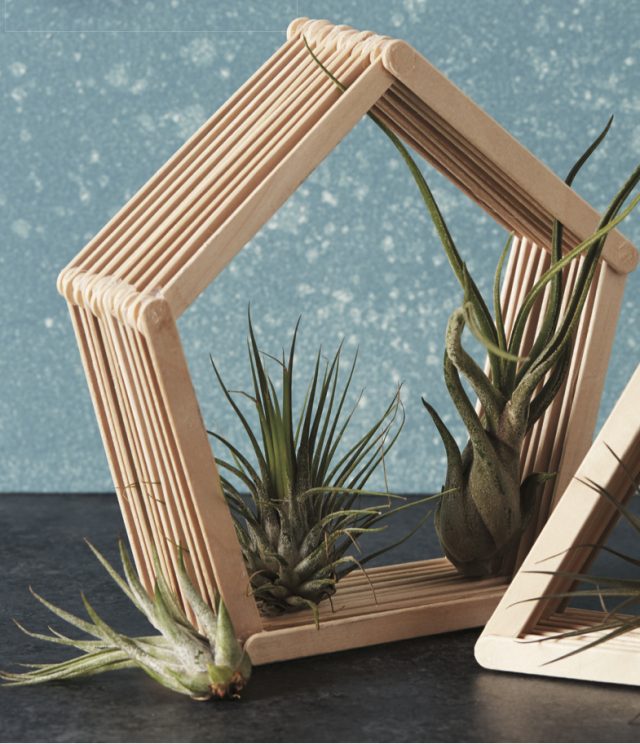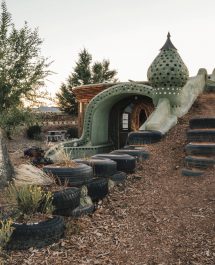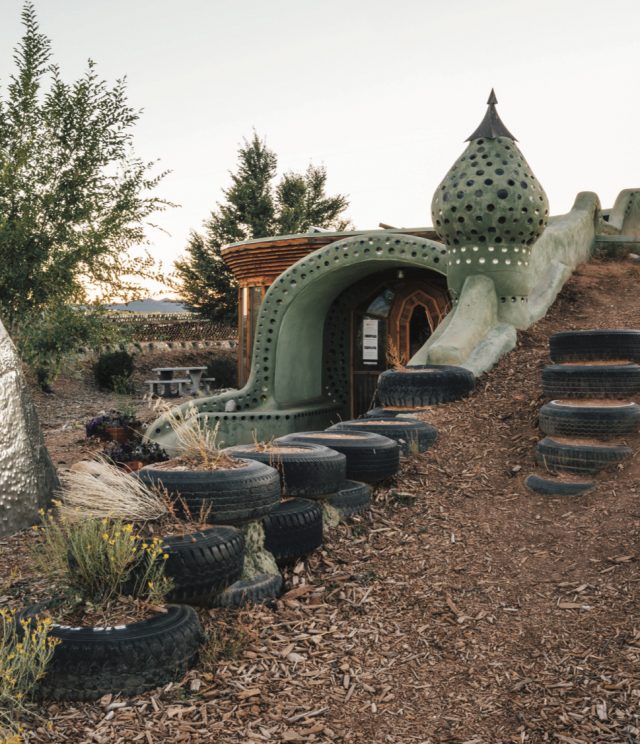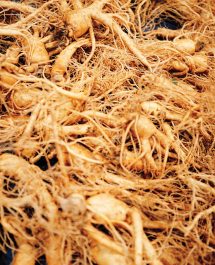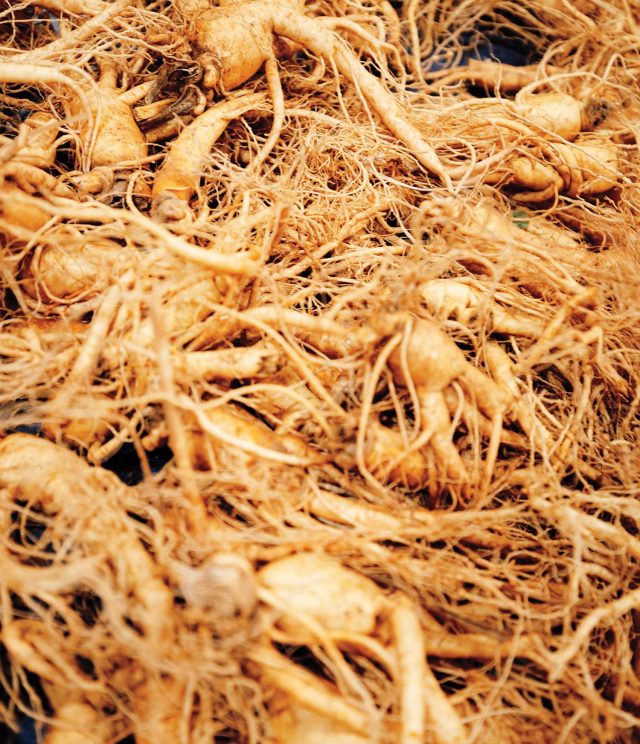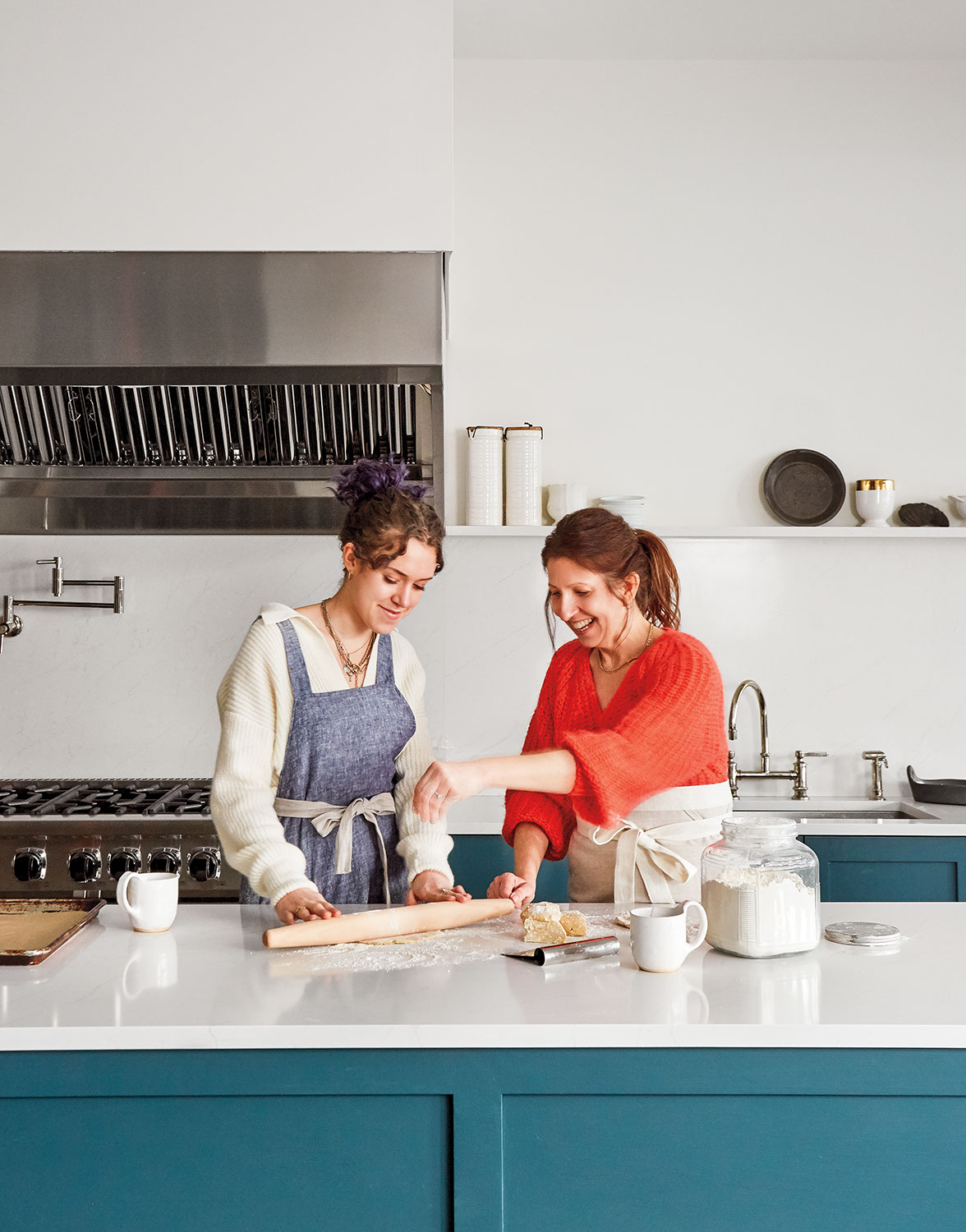
STORY BY REBECCA MILLER FFRENCH ✷ PHOTOGRAPHS BY RIKKI SNYDER
Without fail, as I drive toward home down Route 28, an east-west corridor that cuts through New York State’s Catskill Park, I feel a surge of happiness when I spot the panoramic silhouette of mountains on the horizon. A born and raised Midwesterner, I am continually awestruck by East Coast geography. To be able to drive from the sea to the mountains in a matter of hours and see all the variegated landscapes affects me on a primal level. Sometimes, it’s what helps me get through the day. Perhaps it’s because of what that expansive, sometimes moody, always inspiring landscape represents to me—home, family, community, and nature.
Twenty years ago, my husband and I decided to plant our roots a couple of hours north of New York City in the tiny hamlet of Phoenicia. We sought a connection that we weren’t finding in the hectic bustle of the Big Apple. And what a community we found! It was almost too good to be true—neighbors dropping off roast duck and potatoes after the arrival of our new baby; another coming to install a bear alarm at 11 p.m. after one of the furry fellows tried climbing in our window, and so it went.
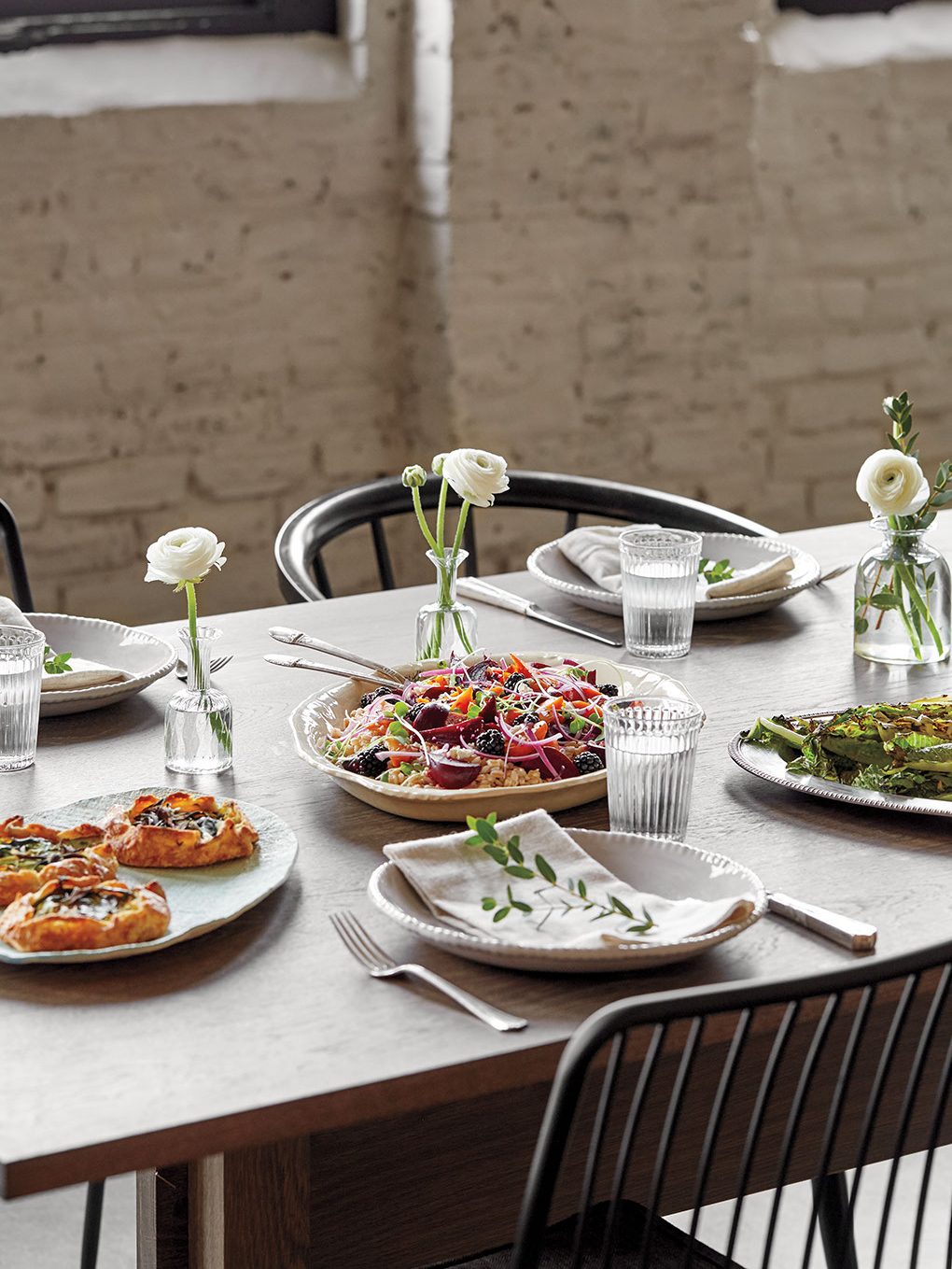
Of course, country living has its challenges, too, including power outages, broken septic lines, and yes, social issues. With the recent influx of people and money to the Catskills and surrounding areas, the concerns about gentrification, displacement, and how we can create more inclusive communities must be addressed. Fortunately, there are efforts on both public and private levels. Around our dinner table, conversations about topics such as these have sparked positive actions amongst my family and friends.
Always ripe to throw a dinner party at any given time, I have witnessed firsthand the connections that can be made over a meal. The fare need not be fancy, or the table pristinely set. To my mind, gatherings are about what we can learn and what we can share. And so, my recent venture, The Upstate Table, evolved from these tableside interactions.
I have an undying love for feeding those around me. A cookbook author, recipe developer, and cake-maker, my profession fits well with that passion and provides me ample opportunities to do it. For years I’d been searching out a property in our area to open some type of farm-to-table spot—perhaps take-out, maybe cooking classes, I wasn’t really sure. In our rural area, I couldn’t figure out how I’d drive people there, or get the numbers to work. Instead, I started hosting pop-up dinners in various locales. I became familiar with Kingston, New York, a decent-size town about a 45-minute drive from our house, but it had always seemed a bit too far and unknown—until my friend put me in touch with local architect Scott Dutton. He said I needed to meet him before I signed a contract anywhere—and was he right.
When Scott showed me one of his projects—the beginning renovations of a former shirt factory called the Fuller Building—I was immediately smitten with its fourteen-foot ceilings, exposed brick, and rough-hewn beams. In contrast to the barns and beaten-down properties I’d seen, this space seemed like a dream: a 750-square-foot, ground-level expanse lined with six-and-a-half-foot-tall paned-glass windows. Granted, the floor was gravel and no walls were in place, but my imagination soared. Scott shared his plans for building a creative community here, along with his openness to designing a space to fit my needs—I was sold.

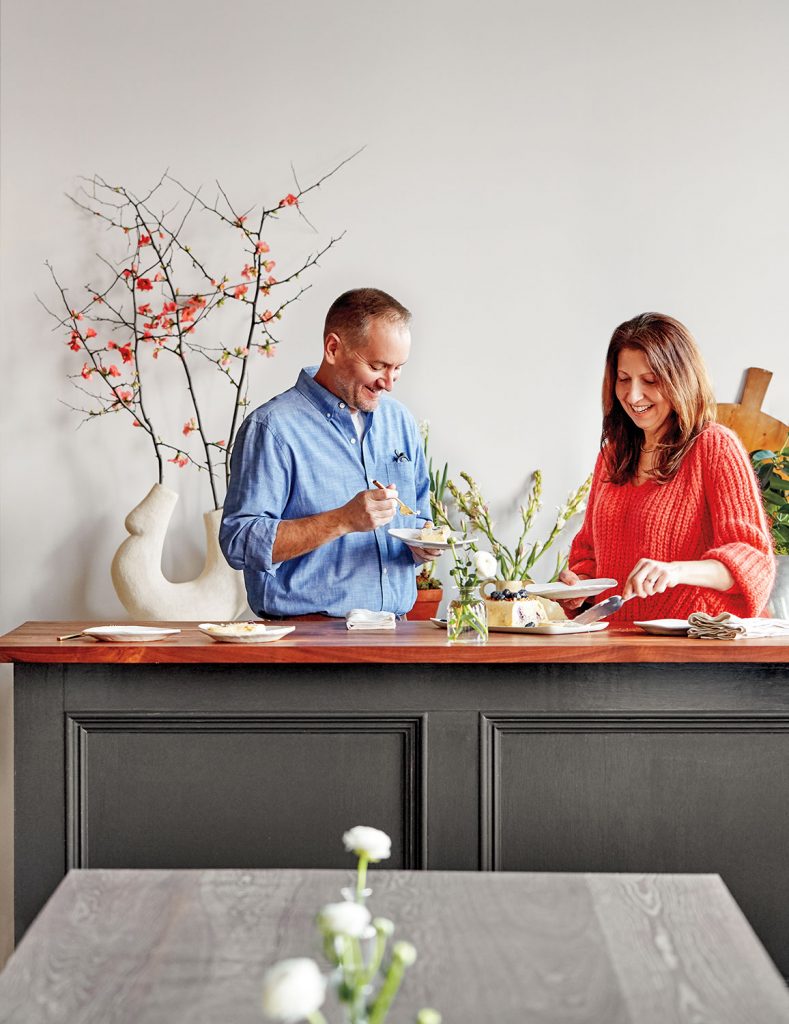
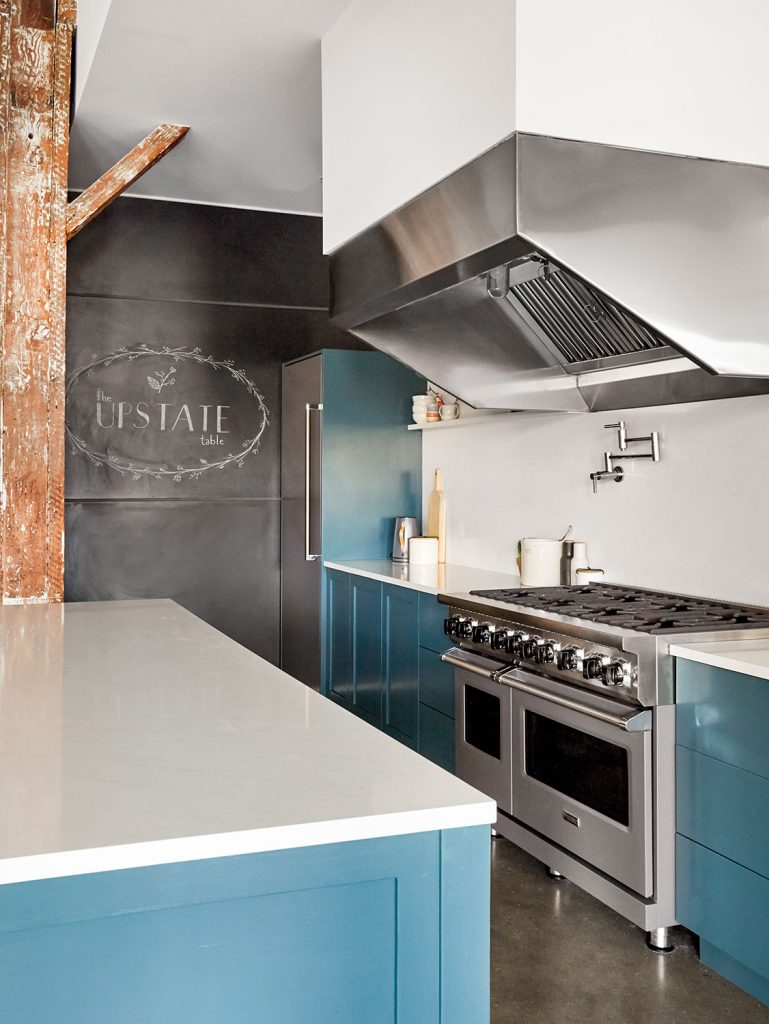
Rebecca Ffrench found a home for her cakery and culinary studio, The Upstate Table, in a former shirt factory. The warehouse was renovated by architect Scott Dutton (pictured with Rebecca, right) into spaces for artists, makers, techies, and more. Rebecca’s space features Wilsonart quartz countertops paired with cabinets by Semihandmade.
The gratification was not immediate, however. The building renovations took almost a year and a half. Then COVID hit, and things were delayed even further. However, I was so far in there was no backing out, not to mention I had been dreaming of this for years—a place where I could continually welcome people and share my love for Upstate living with a focus on food and community. I now understand fully when I hear entrepreneurs say they have an undying passion for an idea. My drive to build a culinary lifestyle studio was resolute. Pandemic restrictions and tighter budgets be damned.
I learned to install cabinet doors by myself, hang chalkboard laminate with my daughter, and repurpose items whose fate was otherwise trash-bound. I found ways to make it work, especially with the boundless support of my family and friends. My husband is my rock, always the voice of reason. My sister meets with me weekly to evaluate goals. My two daughters are excellent food critics, and my youngest, Camilla, a recent high school graduate, has become my creative director. She assisted me on my first cookbook tour at the age of eight and has not stopped since. We have taught classes side by side, she built our website, designed our logo, and the list goes on.
Now that our doors are open, the pandemic means we have to limit our offerings, which include cooking and craft workshops, plus dinners highlighting local makers and vendors. In the meantime, I’m finding ways to nurture a love for cooking and entertaining virtually through online content and virtual baking sessions. We’re also renting our studio for photo shoots and content development.
With The Upstate Table, my goal is to share the spirit, passion, and creativity that surrounds us daily in the Catskills, from a farmer’s love for his diversified crops to a woodworker’s desire to make beautiful, functional items. I want people to be able to learn and create in an inspiring environment—to feel comfortable in the kitchen—and most importantly, have fun along the way.
I echo the words of my Fuller Building neighbor, “I almost feel I have to pinch myself” about being surrounded by like-minded entrepreneurs and business owners every day. Even with COVID shutdowns, I feel extremely hopeful for what’s to come—I know even the virus can’t squash the energy and spirit of our community.
“Rebecca’s Must Haves”
Whetstone
A must for keeping my knives sharp. Without a honed chef’s knife, I’m lost.
Tawashi Brush
A natural scrubber made from biodegradable palm fibers, I always have two on hand. One dedicated to washing vegetables and another to scrub pots.
Organic Cotton Bags
I take mesh ones shopping to use in lieu of using plastic produce bags. I also use solid cotton bags to store bread.
Bench Scraper
As a cake decorator, I couldn’t live without this tool to smooth buttercream, and as a cook, it’s great to scoop up chopped vegetables, clean counters and more. I highly recommend a metal one over plastic.
Baker’s Apron
Made by a local seamstress in the Catskills, our signature aprons made from heavy-duty linen always make me feel a little dressed up in the kitchen.
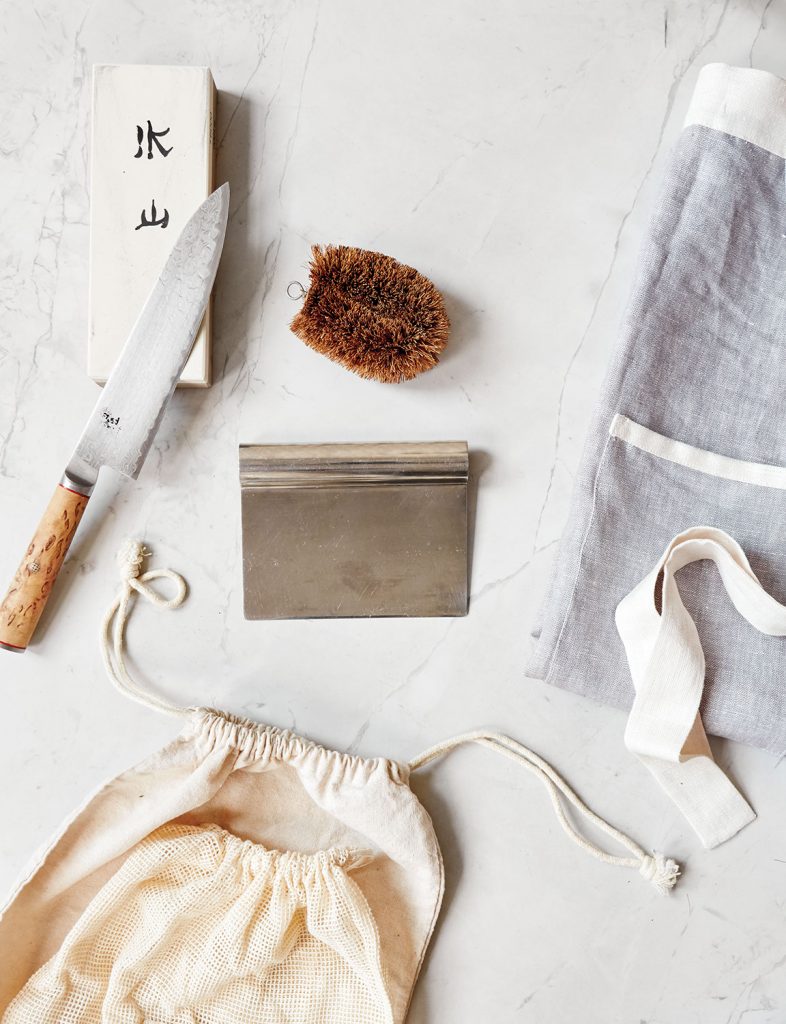
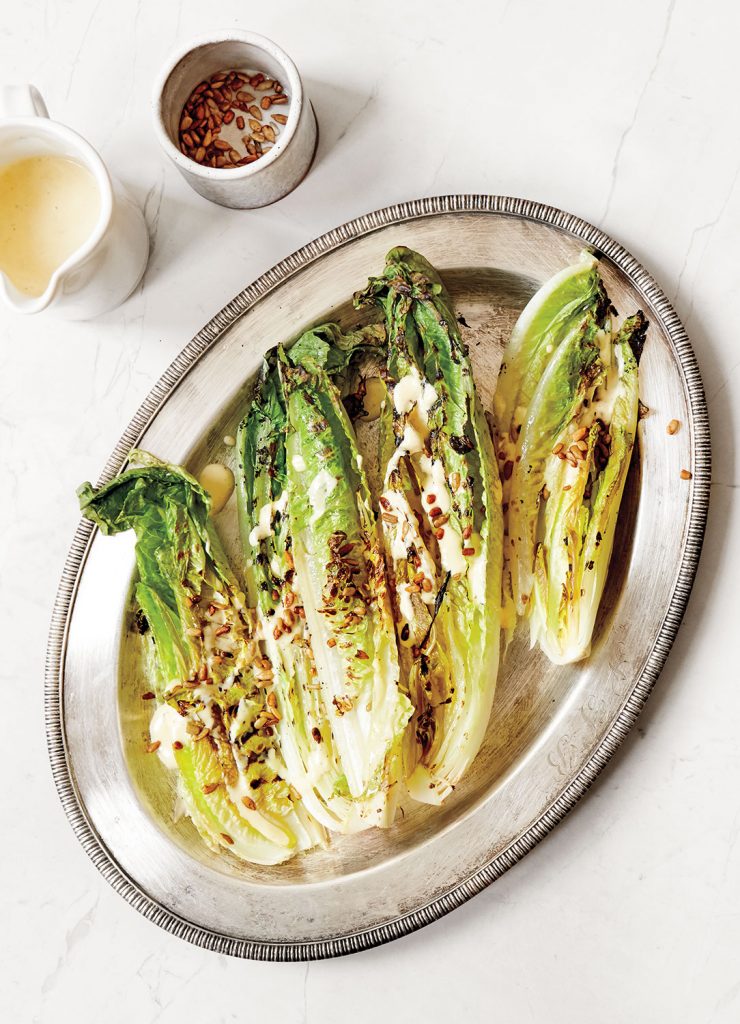
Grilled Romaine Spears with Creamy Lemon Vinaigrette
Gather
¾ cup extra-virgin olive oil, divided
2 tablespoons fresh lemon juice
1½ teaspoons Dijon mustard
1 small garlic clove, minced
¼ teaspoon kosher salt, plus more to taste
Freshly ground black pepper to taste
3 hearts of romaine
To Make
In a small bowl or jar, whisk together ½ cup olive oil, lemon juice, mustard, garlic, salt, and pepper to taste. Set aside.
Cut the romaine hearts in half, peeling away any loose leaves. Brush them generously with the remaining olive oil and season with salt and pepper to taste.
Heat a grill pan over high for about 5 minutes or until it’s very hot. Using tongs, carefully place the romaine hearts cut side down on the grill pan and cook for 2 to 3 minutes or until they just start to wilt. Place them cut side up on a platter, drizzle with the lemon vinaigrette and sprinkle with Tamari Toasted Seeds.
TAMARI TOASTED SEEDS
Gather
2 teaspoons coconut or olive oil
2 cups sunflower seed kernels
2 tablespoons tamari
To Make
Pour the oil in a large skillet and heat over medium high for a minute. Stir in the seeds and stir constantly for 3 to 4 minutes or until they start to smell toasted. (Don’t wait for them to turn golden.)
Remove the pan from the heat and toss the seeds with the tamari until coated (they will continue to cook in the hot pan so watch that they don’t burn). Transfer to a bowl or sheet pan to cool.

Farro with Roasted Beets and Blackberries
FOR THE SALAD
Gather
1 bunch baby beets (about ¾ pound), scrubbed clean
1 cup uncooked farro (3 cups cooked)
2 ¾ cups water
1 bay leaf
¾ teaspoon kosher salt, divided
½ cup sliced red onion
1 ½ ounces microgreens, fresh mint, or arugula
For garnish:
6 ounces blackberries
6 ounces crumbled feta
Freshly ground black pepper
To Make
To roast the beets, first preheat the oven to 400ºF. Wrap freshly washed beets in foil (no need to dry them, it’s better if they are slightly wet). Place the foil-wrapped beets on a baking sheet and roast for 50 to 60 minutes or until fork tender. When they are finished roasting, allow them to cool to the touch. Peel the beets by rubbing the skins with your fingers, they should slide right off. Slice the peeled beets into thin wedges. Set aside.
Cook the farro by putting it in a medium-size saucepan with 2 ¾ cups water, bay leaf, and ½ teaspoon salt. Bring the water to a boil over high heat, then lower it to a simmer, cover and cook for 30 minutes or until the grain is tender yet still slightly chewy. Drain the farro if any liquid remains and transfer it to a salad bowl.
FOR THE DRESSING
Gather
2 tablespoons finely diced shallot
3 tablespoons extra-virgin olive oil
1 tablespoon fresh orange juice
1 tablespoon fresh lemon juice
2 teaspoons white wine vinegar
1 teaspoon honey, agave, or maple syrup
½ teaspoon kosher salt, more for salad
To Make
Combine all the ingredients in a jar or lidded container. Shake well.
Put the Farro Salad on a platter or in a large salad bowl and toss with 1 tablespoon of dressing, and salt and pepper.
Next add the beets, red onions, and microgreens (or other greens) and toss with the remaining dressing. Sprinkle with blackberries, feta, and a few turns of freshly ground black pepper.
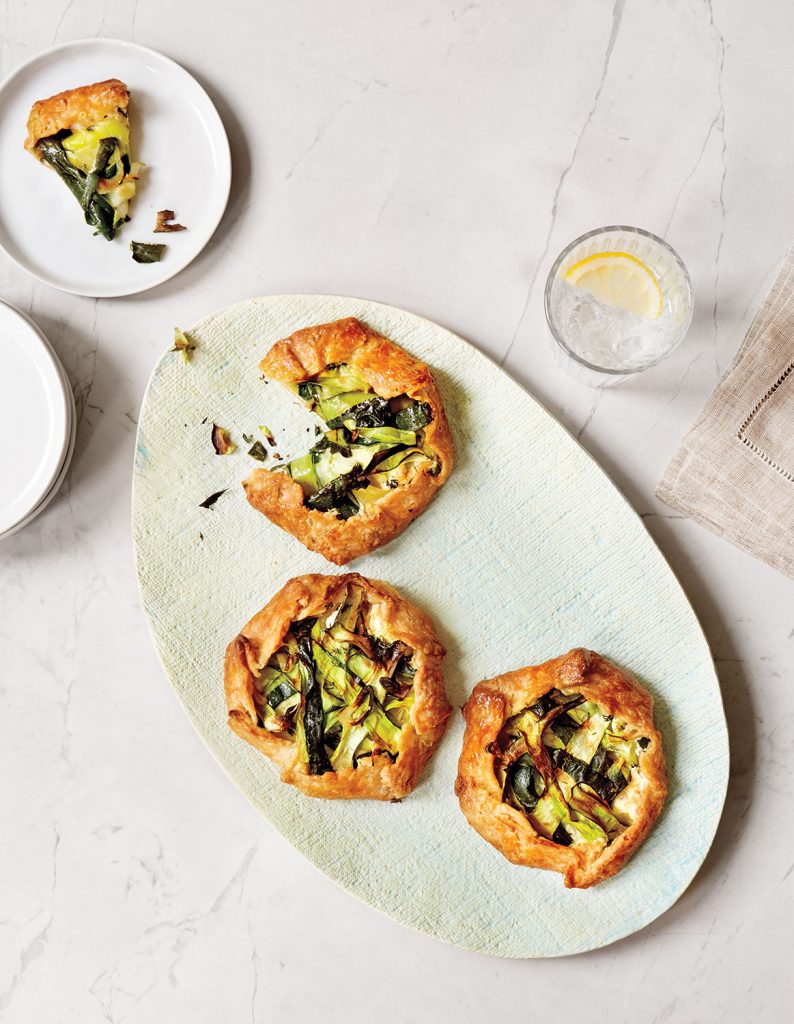
Ricotta Zucchini Rustic Tarts
FOR THE CRUST
Gather
2 cups all-purpose flour (we used Hudson Valley Farm Hub flour sold by the Y Farm Project)
1 teaspoon kosher salt
12 tablespoons unsalted butter, cut into ¼-inch cubes
1 large egg
1½ teaspoons apple cider vinegar
6 tablespoons ice cold water
To Make
To make the crust, put the flour and salt in a large bowl. Toss with a fork to combine. Add the butter, and using two forks, toss the cubes with the flour until fully coated. Using the forks or a pastry blender, break down the butter into pea-size pieces.
In a small bowl whisk together the egg and vinegar and sprinkle it over the flour mixture. Next, sprinkle the water tablespoon by tablespoon over the flour. Using the two forks, gently toss the flour until it comes together as a shaggy mass.
Then, using lightly floured fingers, gather the mass and press it together into a round disk. Wrap it in plastic wrap and refrigerate for 30 minutes, or up to two days.
After the dough has chilled, remove the dough from the refrigerator and divide it into 6 equal pieces. Using your hands, roll each piece into a ball. One by one, flatten each piece and place on a lightly floured surface. Using a rolling pin, form 6-inch circles, rotating the circles as you roll to maintain a circular shape.
Preheat the oven to 400ºF and line two baking sheets with parchment.
Place three dough circles on each prepared baking sheet and chill in the refrigerator (if you have room) or set aside in a cool place while you make the filling.
FOR THE TART FILLING
Gather
1 cup fresh ricotta
2 tablespoons extra-virgin olive oil, divided
Zest from 1 lemon
½ teaspoon kosher salt, divided
Freshly ground black pepper, to taste
2 medium zucchini
½ cup thinly sliced shallots
½ teaspoon fresh thyme leaves
1 egg, lightly whisked
To Make
In a small bowl, stir together the ricotta, 1 tablespoon olive oil, lemon zest, and ¼ teaspoon salt and black pepper to taste. Set aside.
Using a vegetable peeler or a mandolin, cut the zucchini into thin ribbons. If the ribbons are long, cut them in half. Put ribbons in a bowl with the shallots and toss with the remaining 1 tablespoon olive oil, ¼ teaspoon salt, black pepper, and thyme leaves.
Place a heaping tablespoon of ricotta on each tart round and spread evenly, leaving a ½-inch border. Arrange the zucchini ribbons and shallots on top of the ricotta. Next, fold the dough border up around the zucchini, pleating as you go. Brush each crust lightly with the whisked egg.
Bake for 40 to 45 minutes, or until the tarts are a dark golden brown. Allow to cool to the touch before serving.

Blueberry Lavender SemiFreddo
Gather
1¼ cups heavy cream
1 teaspoon pure vanilla extract
4 large eggs
½ cup organic cane sugar
Couple pinches of kosher salt
½ cup blueberry jam
1 tablespoon ground lavender
3 almond biscotti cookies, crushed (about 1 cup)
½ cup fresh blueberries
1 tablespoon honey
To Make
Completely line a 9 x 5-inch loaf pan with one single piece of plastic wrap so a couple inches overhang on all sides. Set aside.
Put the cream in the bowl of a stand mixer fitted with a whisk attachment and whip until stiff. Fold in the vanilla. Transfer to a separate bowl and refrigerate until needed.
Rinse and dry the mixer bowl and in it combine the eggs, sugar, and salt. Place it over a pot of water to create a double boiler and cook over a high simmer, whisking constantly, until the mixture is very warm to the touch. Immediately transfer the bowl to the stand mixer and using the whisk attachment, whip until the eggs almost triple in size and create soft peaks. This may take up to 10 minutes or more.
Gently fold the whipped cream into the whipped egg-sugar mixture and, using a spatula, transfer it to the prepared loaf pan.
In a small bowl, stir the lavender into the jam, and using a small spoon, evenly drop the jam into the cream-egg mixture. Then using a skewer or fork, create swirls where you dropped the jam. Sprinkle half the crushed biscotti evenly over the loaf, fold the plastic wrap up around the pan (use another piece if needed) and freeze until firm, about 8 hours or overnight.
When it’s time to serve the Semifreddo, turn it out onto a platter and remove the plastic (it should be firm but not solid). If the sides of the custard are rippled from the plastic, you can smooth them by dipping a small offset spatula into hot water and running it over the bumps.
Sprinkle the top of the Semifreddo with the remaining crushed biscotti. Toss the blueberries with the honey and use for garnish. Slice and serve.

